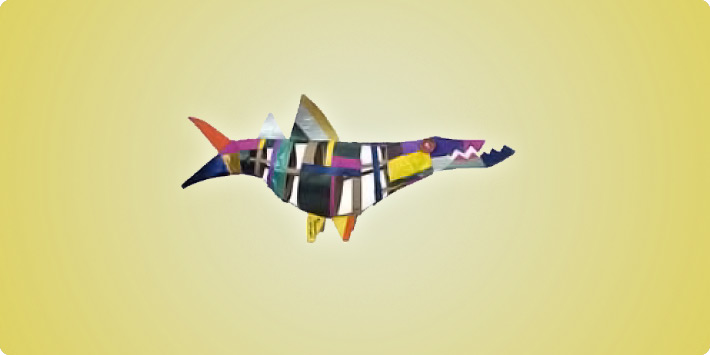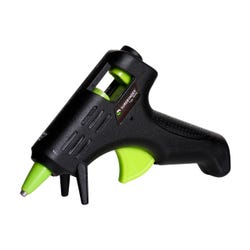Language of Sculpture: Paper Sculpture-Sea Life

Description
In his book Talented Teenagers: the Roots of Success and Failure, Mihaly Csikzentmiahly, a Hungarian psychology professor whohas taught at several prestigious colleges in the U.S., writes of his Flow concept. He theorizes that people are happiest when theyare utterly absorbed in an activity. Time seems to fall away and freedom, enjoyment, fulfillment and skill are the primary feelings thatresult. A Flow activity is one that that requires skill and challenging work but not beyond the level of the participant. These in-the-zoneexperiences are more enjoyable than those that are purely recreational activities. This Lesson Plan-Art Activity uses the upper limits of students talents, thinking and creative skills that produce total involvement and interest. The genre of paper sculpture has been depicted artfully by pushing paper to its absolute limits. This Lesson Plan utilizes paper applied as a collage as an assemblage to a chipboard construction work.
Objectives
- Students will visit aquariums if possible, to sketch and study sea creatures as part of Aquatic Biology. The alternative to this would be to examine a wide variety of library books and websites on sea creatures.
- Students will choose a specific sea-life creature, eg. an aquatic craniate vertebrate/animal, see it as a visual arts image and create a paper sculpture that will demonstrate their upper limits of thinking, creativity and production skills.
Supplies Needed
Gray Chipboard, 16 ply, 26 x 38, 10-Sheet Pkg. 456851
Array Colored Card Stock, Brights, 65-Lb., 8-1/2 x 11, 100-Sheet Pkg. 027601
Wausau Paper Royal Metallic Paper Assortment, 50-Lb., 12 x 18, 24-Sheet Pkg. 409384
Tie-Dye Paper Assortment, 8-1/2 x11, 32-Sheet Pkg. 401867
Sax Colored Art Paper, Assortment, 12 x 18, 50-Sheet Pkg. 402024
Yasutomo Nori Paste, 10-Oz. Jar 405546
Aleenes Brush-On Tacky Glue, 4-Oz. 411160
Mini Hot Glue Gun, High Temp 463373
Mini Glue Sticks, 1-Lb. Pkg., 110 Sticks 444542
Sax Metallic Liquid Watercolors, 6-Color Set 409165
Sax Fluorescent Liquid Watercolors, 6-Color Set 1287638
Wiggle Eyes, 13/16, 100-Piece Pkg. 409849
Standards
CONTENT Standard #1: Understanding and applying media, techniques and processes.
CONTENT Standard #2: Using knowledge of structures and functions.
CONTENT Standard #3: Choosing and evaluation of a range of subject matter, symbols and ideas.
CONTENT Standard #5: Reflecting upon and assessing the characteristics and merits of their work and the work of others.
CONTENT Standard #6: Making connections between visual arts and other disciplines.
Instructions
1
Students will research a sea creature for a base line of knowledge. For example for a Barracuda: its shape, size, textures, ratio-scale, fins, eyes, lateral line, mouth and jaws, etc.
2
Experiment with various types of paper sculpture flexibility techniques: curling, folding, scoring, tearing cutting, crushing and creasing, etc.
3
Create the skeleton of the sea creature using the chipboard cut into strips (approximately 1 x 7/8 long). The fish will have a lateral line-backbone which will be the main piece of the skeleton followed by various sized ribs, fins, lower and upper jaw, etc. These will be cut, shaped and bent from the chipboard to form the entire skeleton. Glue together with the hot glue. The completed fish skeleton should stand on its own with the thickness and height in proportion to its overall size.
4
When glue is dry-cured, add additional chipboard pieces if necessary to form a sturdy skeleton construction.
5
Glue the colored papers onto the chipboard skeleton base. Consider applying the paper experiments from the earlier paper experimentation in Step 2.
6
If desired, glue across open areas to give volume to sculpture. If white paper is used as an appliqué embellishment, add watercolors for aquatic effect. Create or add Wiggle Eyes to the final sculpture. Curate with students name, title and date.







